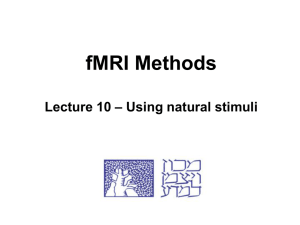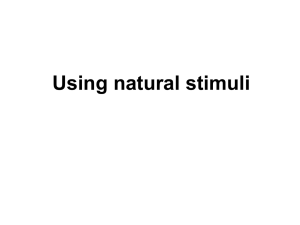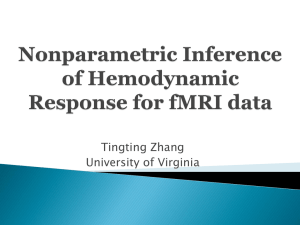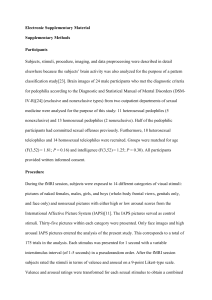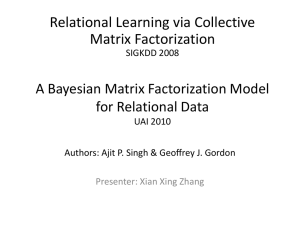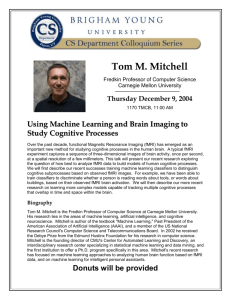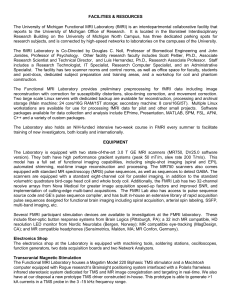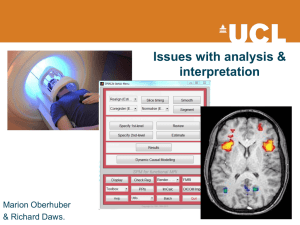One aim of brain imaging studies of visual perception is to
advertisement
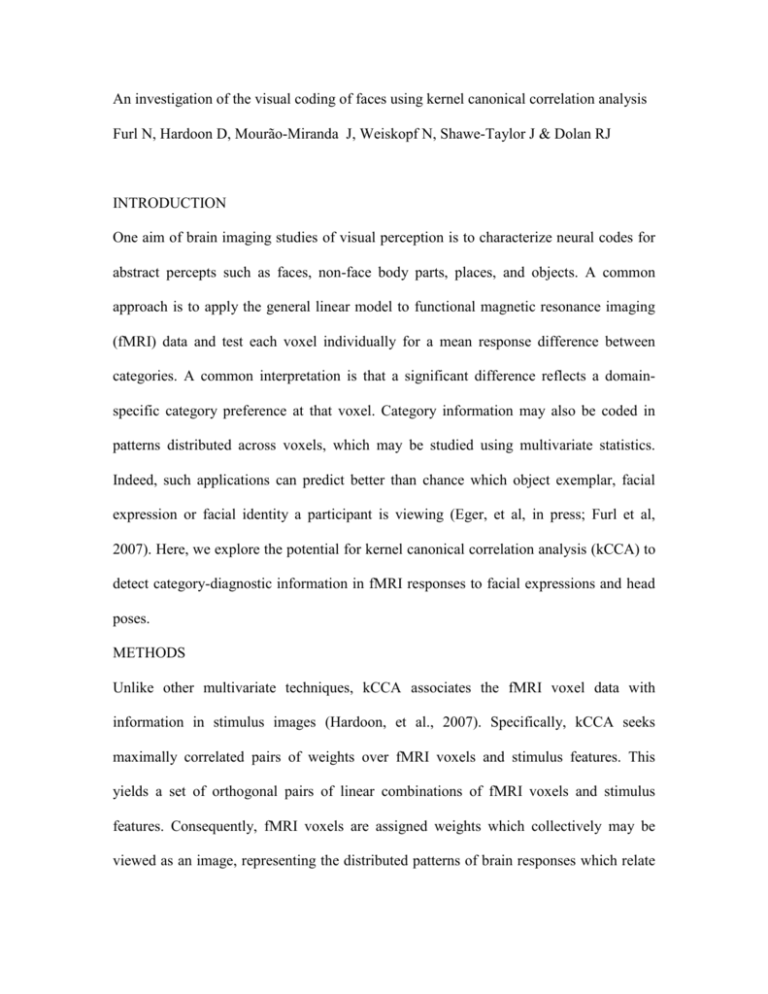
An investigation of the visual coding of faces using kernel canonical correlation analysis Furl N, Hardoon D, Mourão-Miranda J, Weiskopf N, Shawe-Taylor J & Dolan RJ INTRODUCTION One aim of brain imaging studies of visual perception is to characterize neural codes for abstract percepts such as faces, non-face body parts, places, and objects. A common approach is to apply the general linear model to functional magnetic resonance imaging (fMRI) data and test each voxel individually for a mean response difference between categories. A common interpretation is that a significant difference reflects a domainspecific category preference at that voxel. Category information may also be coded in patterns distributed across voxels, which may be studied using multivariate statistics. Indeed, such applications can predict better than chance which object exemplar, facial expression or facial identity a participant is viewing (Eger, et al, in press; Furl et al, 2007). Here, we explore the potential for kernel canonical correlation analysis (kCCA) to detect category-diagnostic information in fMRI responses to facial expressions and head poses. METHODS Unlike other multivariate techniques, kCCA associates the fMRI voxel data with information in stimulus images (Hardoon, et al., 2007). Specifically, kCCA seeks maximally correlated pairs of weights over fMRI voxels and stimulus features. This yields a set of orthogonal pairs of linear combinations of fMRI voxels and stimulus features. Consequently, fMRI voxels are assigned weights which collectively may be viewed as an image, representing the distributed patterns of brain responses which relate statistically to stimulus information. When stimuli have common image features which overlap spatially (as with faces), the stimulus “weight maps” may also be viewed as interpretable images, showing the spatial distribution of pixels relating to the corresponding brain response pattern. Using high resolution fMRI, we scanned ventral extra-striate brain regions while participants viewed blocks of faces comprising three head poses and seven expressions. We then used kCCA to statistically associate pixel values in the stimulus images with the fMRI voxel values. RESULTS kCCA yielded stimulus weights capturing information about head pose as well as muscle positions associated with different facial expressions. kCCA classified facial expressions with moderate, above-chance accuracy (~55-60% for pairwise comparisons), comparable to that produced by several supervised methods. This occurred even though kCCA was blind to stimulus category labels during training. CONCLUSIONS We conclude that kCCA is a useful analytic application for brain imaging data and shows that different regions of face images can differentially activate distributed patterns of fMRI responses in the ventral temporal cortex. Partial support by Human Frontier RGP0047/2004-C. REFERENCES Eger, Ashburner, Haynes, Dolan, Rees, Distributed information in human LOC reflects size and viewpoint invariance of individual objects, J Cog Neurosci, In press Furl, Mourão-Miranda, Averbeck, Weiskopf, Dolan, Spatiotemporal Classification of Facial Expression and Identity Representations using High Resolution Imaging, 39th Annual Meeting of the European Brain and Behaviour Society at Trieste, Italy, 2007 Hardoon, Mourão-Miranda, Brammer , Shawe-Taylor, Unsupervised analysis of fMRI data using kernel canonical correlation, Neuroimage, 27, 1250, 2007
